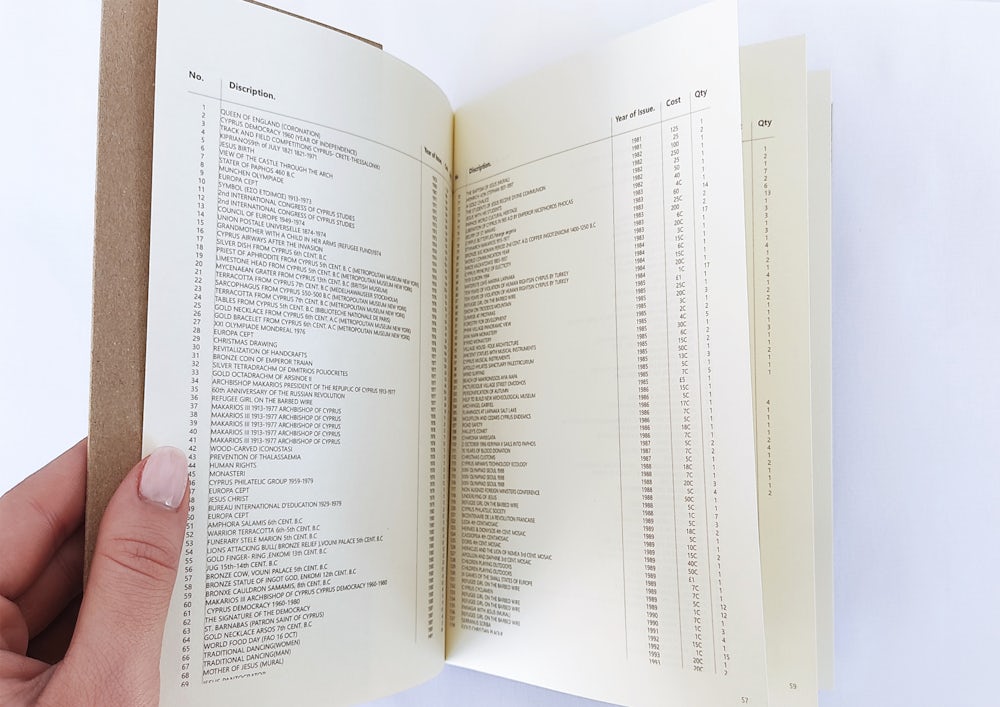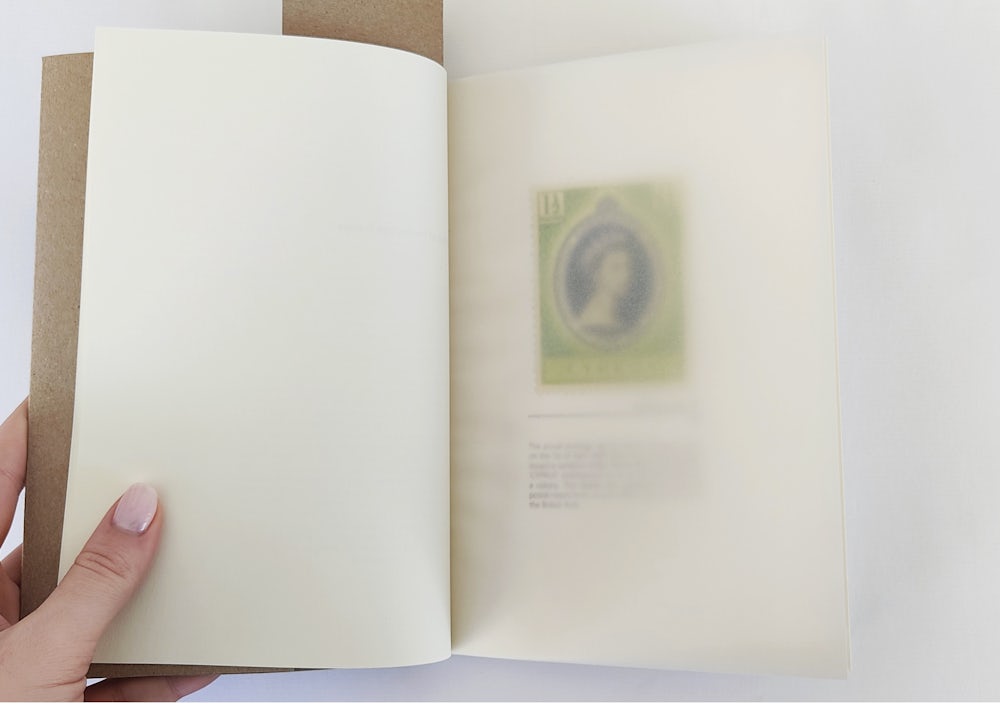Panagiota Angelidou
"One version of Cypriot history (1953-2015) through 251 postage stamps from a personal collection"
Keywords: publishing, objects, archival practice, borders/boundaries, memory, family
It all started with my mother’s broad stamp collection with depictions from all over the world. I have always been keen on this collection, so I started looking closer at it until I decided to focus on Cyprus stamps since my mother originates from there. Therefore, I attempted to find associations between the visual representations on the stamps, the events that occurred in Cyprus, and my mother’s memories in order to understand the messages behind them. Postage stamps have for nearly 200 years been key enablers of a system that links humans by physical messages. But beyond their role as facilitators of communication, postage stamps play a significant role in the establishment of a country’s image, as they carry a variety of meanings through their visual representations. Many governments figured out that postage stamps could act as a valuable agent for conveying and transmitting their policies. An interesting example would be Great Britain, where the postage stamp was first introduced to the audiences. The image of the reigning monarch that appears on every stamp became so strong through repetition that it has replaced the name of the country itself. The United Kingdom became the only country which does not need to inscribe its name on its stamps. Political messages such as these seem to have been carefully cultivated, to be interpreted by other countries, for example, as a proclamation of dominance and strength. The actual postage stamp history of Cyprus starts on the 1st of April 1880 when the United Kingdom issued a variation of the Penny Black with the word CYPRUS emblazoned on it, as the island was now a colony. This stamp was supposed to serve the postal needs from, to and within Cyprus now under the British Rule. As soon as Cyprus entered its post Colonialism era in 1960, the Republic of Cyprus decided to concentrate on advocating its own image, heritage, and uniqueness as a manifestation of sovereignty. It even went as far as completely eradicating the use of the English language on its stamps for some time, despite it being one of the three official languages of the state. In addition, after the Turkish invasion of 1974, three refugee stamps were issued, the most characteristic of which depicts a refugee child sitting among the barbed wire. These stamps, produced by the famous Greek engraver Tassos, were used as additional postage on each postal item along with the other stamps. The imposition of the refugee mark was not only for economic reasons, as the revenues end up in the state coffers, but it is also promoting the Cyprus issue abroad. A politically important visual in a postage stamp is this one with the ancient Kyrenia ship. Andreas Kariolou the Greek Cypriot diver discovered the wreck of a 4th century BC Greek merchant ship in 1965. The actual ship remains in Kyrenia and the image of it has been reproduced by the Republic of Cyprus in the Cypriot passport as well as on Cypriot euro coins. The connection with ancient Greece seemed to be extremely crucial to the Republic of Cyprus since it boosted the link between Hellenism and the island. Last but not least, a small delicate flower as the Cyprus Cyclamen in the postage stamp had also appeared in a poem that became popular in Cyprus, during the troubled war period of 1974. The poem Discussion with a flower (Kuvēnta mē ēna lulūdi), written by Greek poet Yiannis Ritsos (1901–1990) symbolically addresses a nation and its people as the cyclamen grows through hardship and survives, even if it is planted in the crack of a stone. This song and its patriotic ideology have remained alive in the consciousness of people ever since. Overall, this book does not only show the illustrations of Cyprus’ stamps and some technical information about them but also, invites the reader to critically reflect the messages, that sometimes can be considered as propaganda, behind the visuals.




